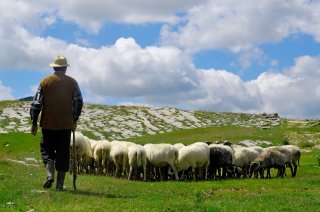
Grass-fed ruminant production within circular food systems
Grasslands produce a biomass source – grass – which is inedible for humans. Ruminants converted this grass into animal-source food. But ruminates also produce methane a greenhouse gas. Using the CiFoS model, we aim to assess the contribution of grass-fed ruminants in a circular food system while minimising the impact on planetary boundaries.
The potential of grasslands
Ruminant production has many societal benefits, including food, income, nutrients, fibre and employment, among others. Grazing prevents land use change in one of the most endangered ecosystems: grasslands. This ecosystem covers 25% of the global land surface and represents 68% of all agricultural areas. Grasslands produce low cost feed (grass) which is inedible for humans but can be used by ruminants to produce nutritious animal-sourced food. Grass-based ruminant systems, therefore, can play an important role in circular food systems.
Ruminants
Even though ruminants can create nutritional value from grassland, they also emit significant amounts of greenhouse gases, including methane. Some argue that at a local level, methane emissions might be offset by the potential to increase carbon sequestration in grass-based ruminant systems. Although there is potential for significant sequestration in certain localized situations – at an aggregated global level, the potential benefits from sequestration are substantially outweighed by the animal’s methane and other emissions. As long as grass-based ruminant systems emit methane and nitrous oxide while grazing, there will be inevitable trade-offs between grassland use for food production and related greenhouse gas emissions. There may also be a trade-off between grassland use and biodiversity loss, depending on, among others, the grazing pressure. This discussion clearly demonstrates the opportunity costs implied when rearing animals on grasslands, and shows that not all grass biomass can be considered a free resource.
It is our aim to use the CiFoS model to assess the contribution of grass-fed ruminants in a circular food system while minimising the impact on our planet’s boundaries.
